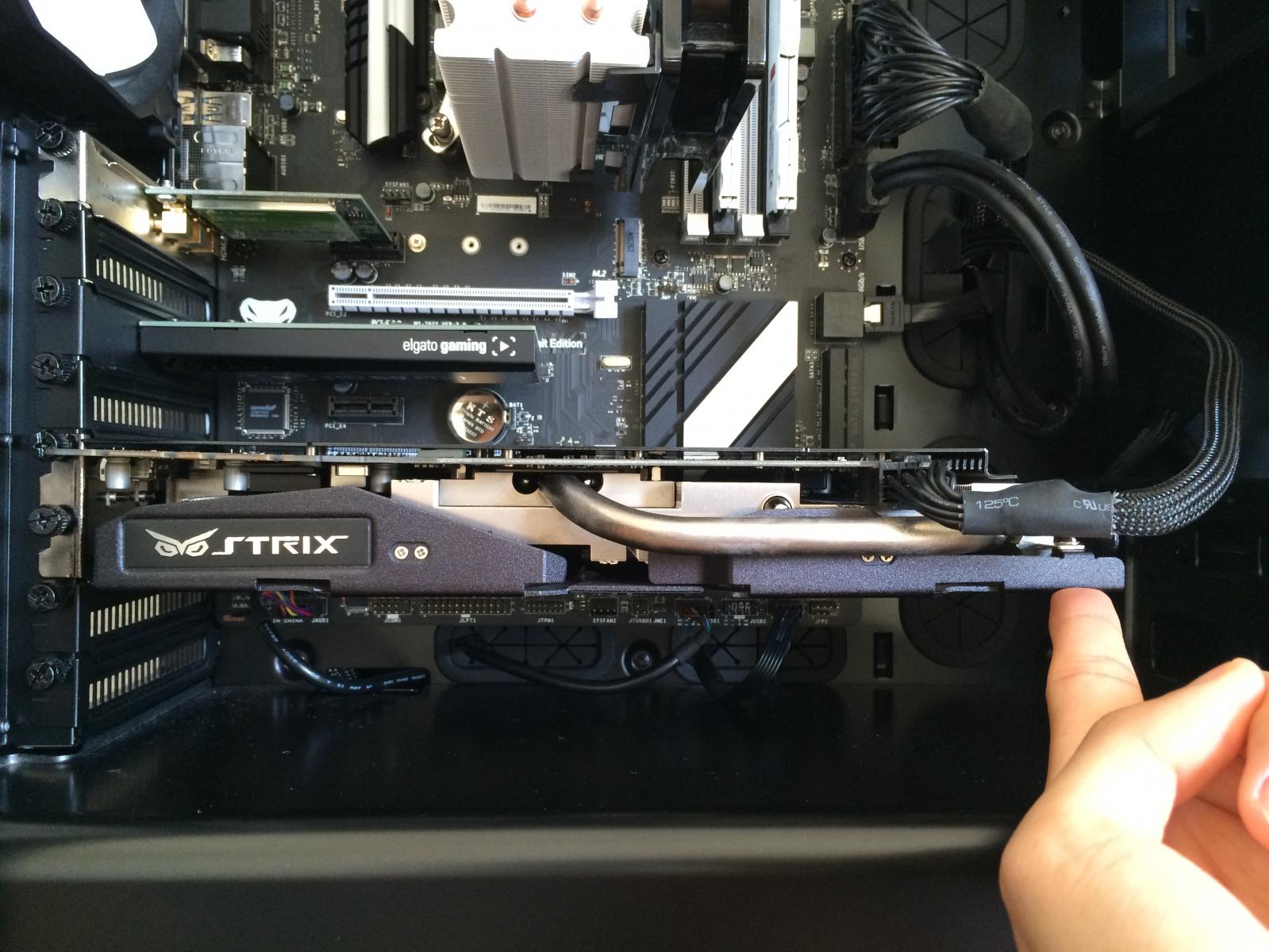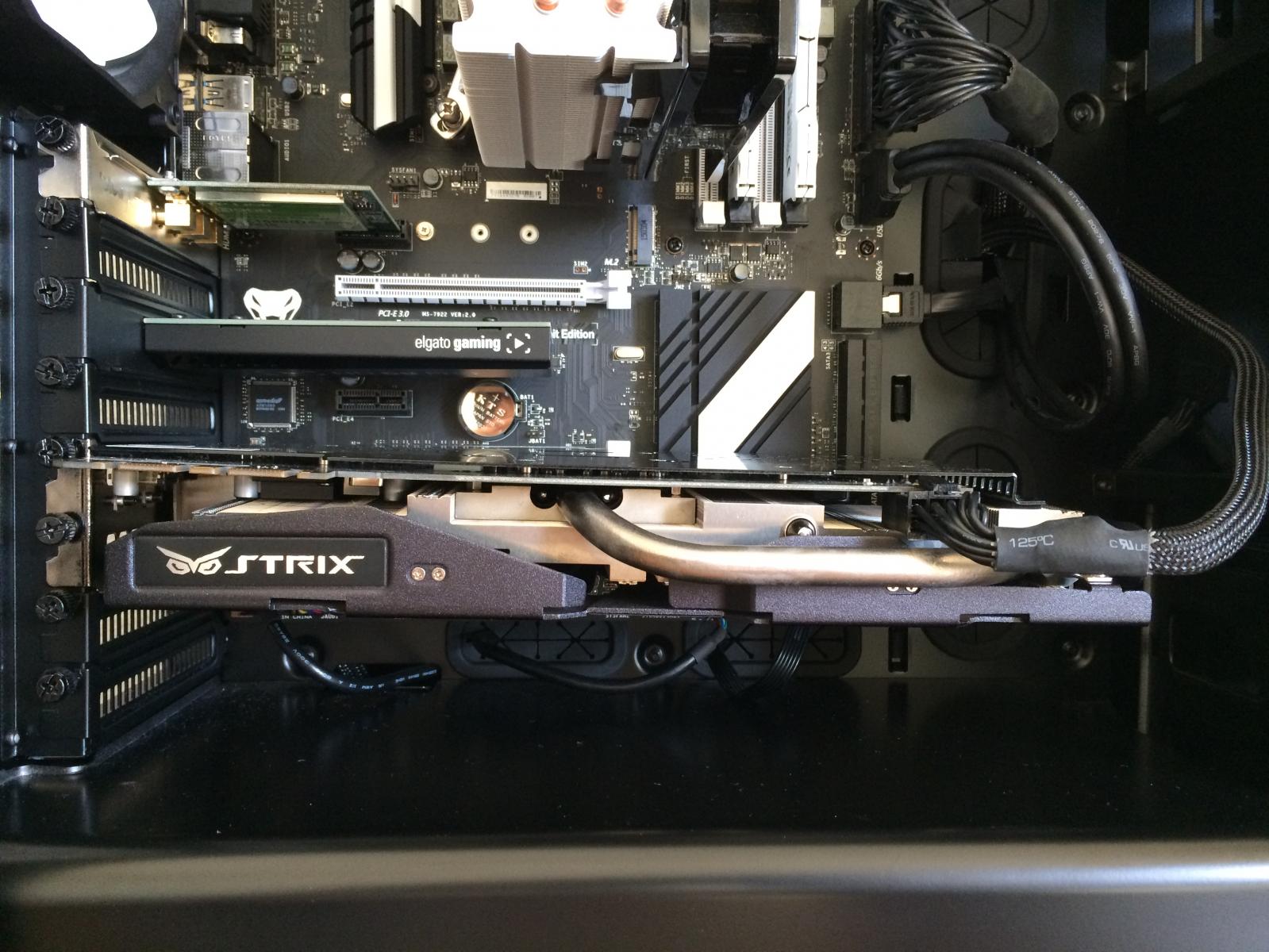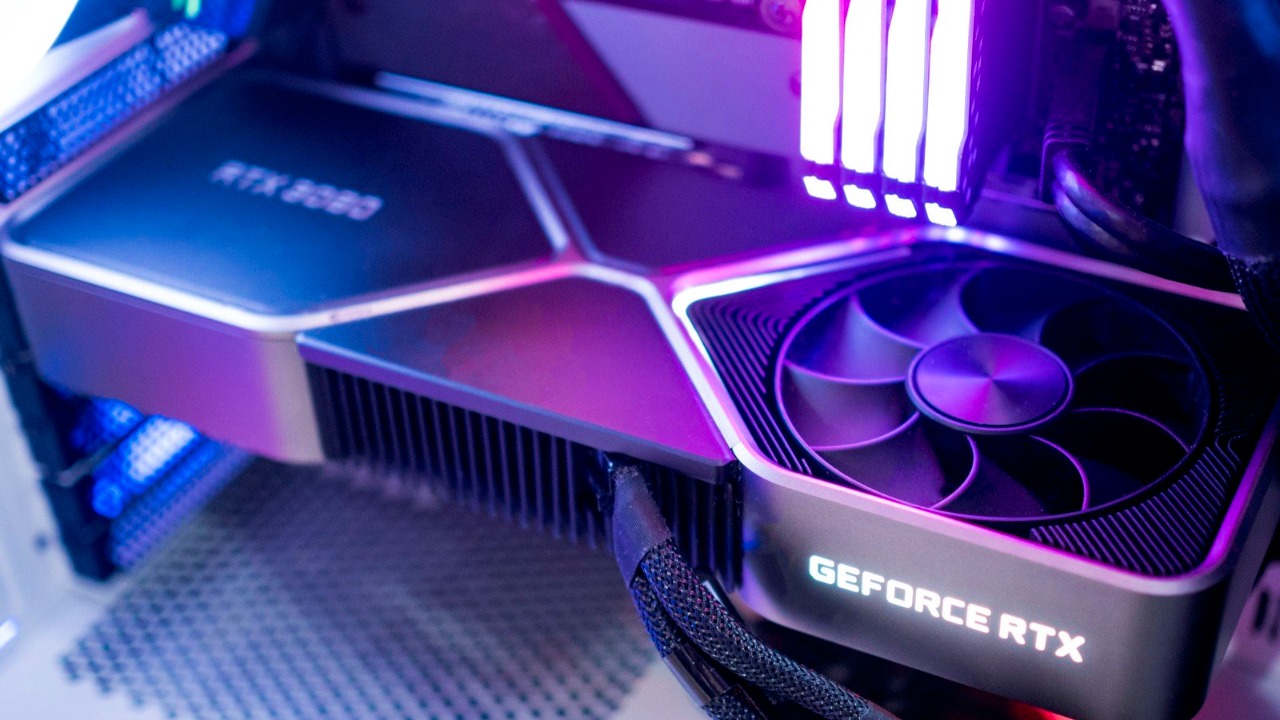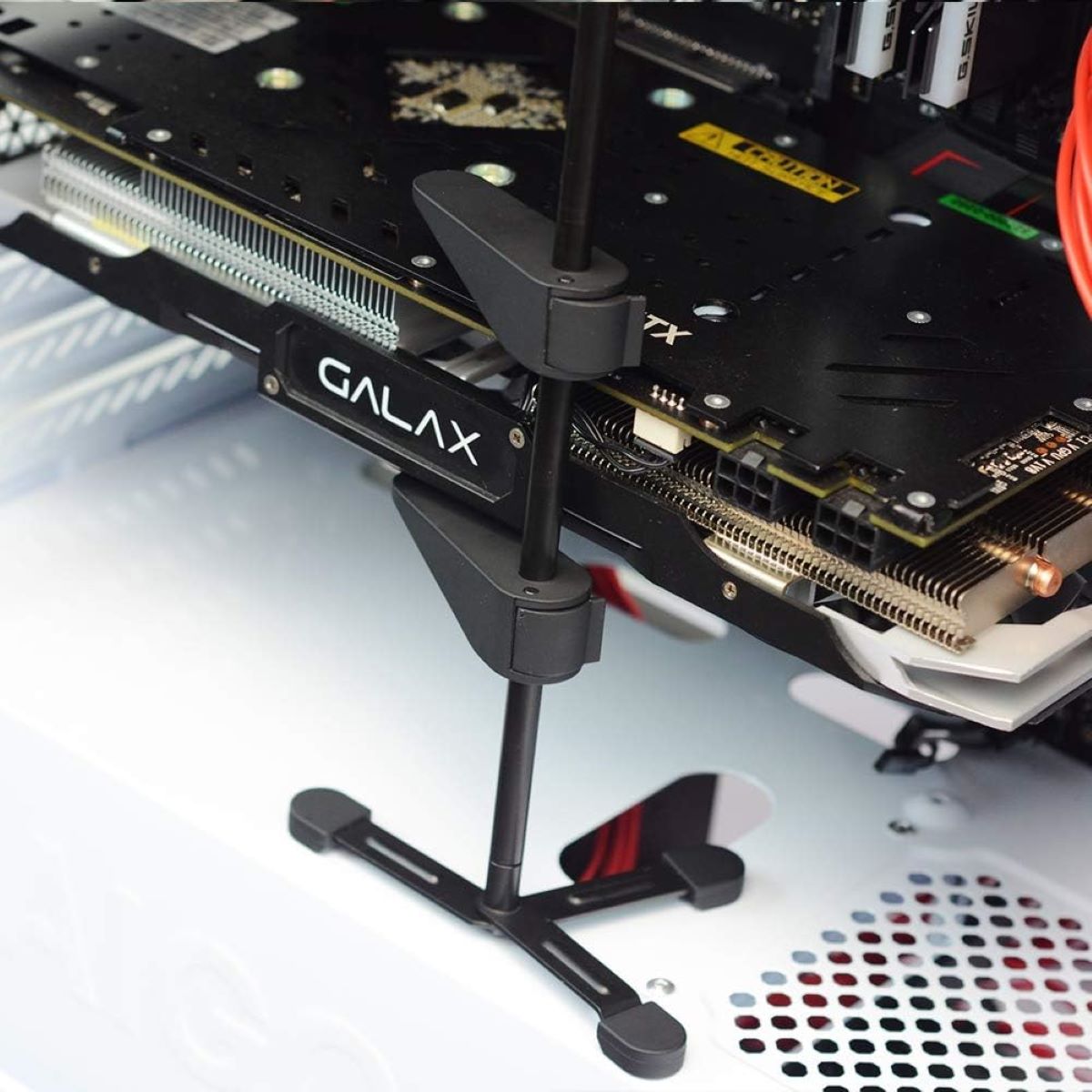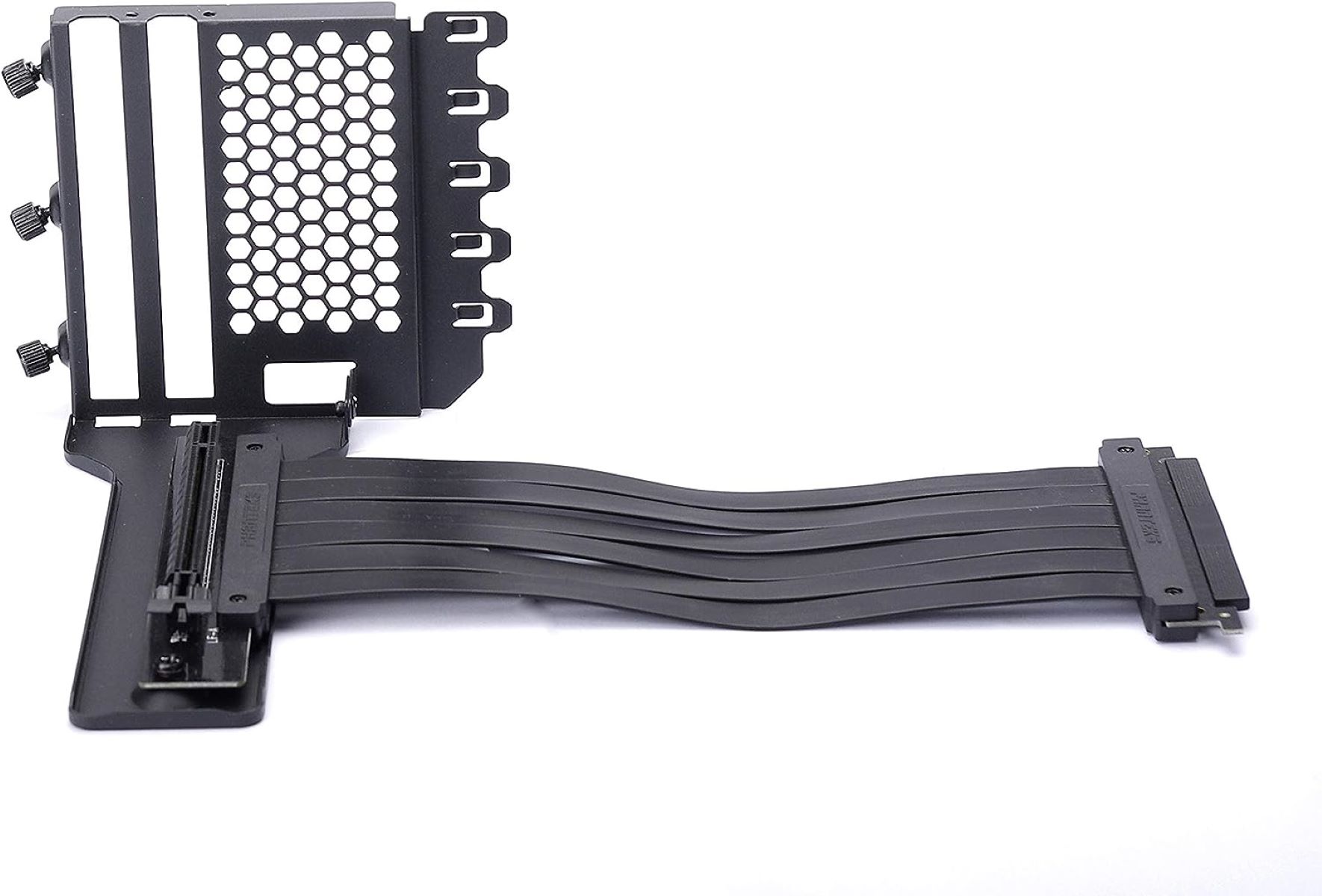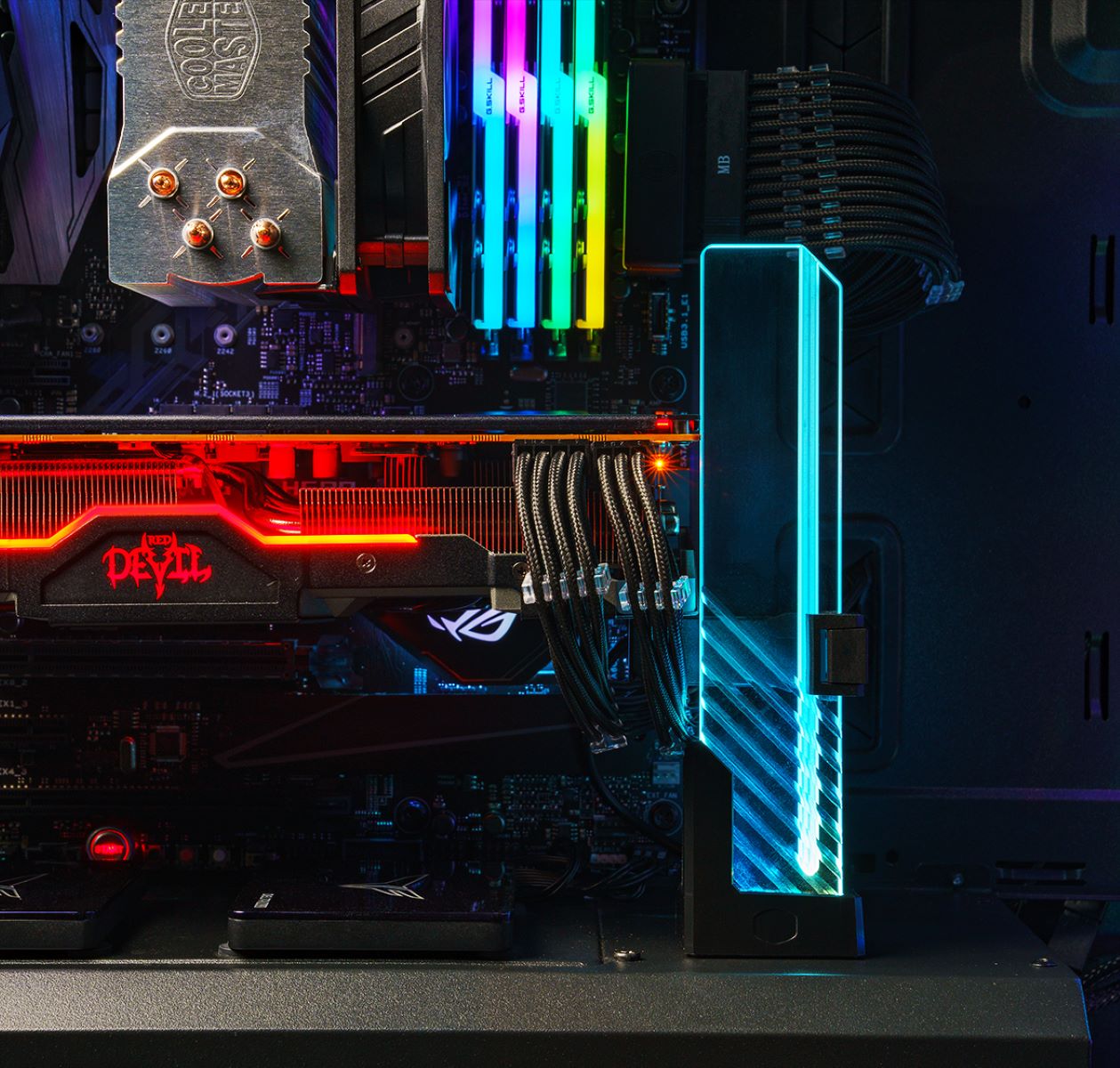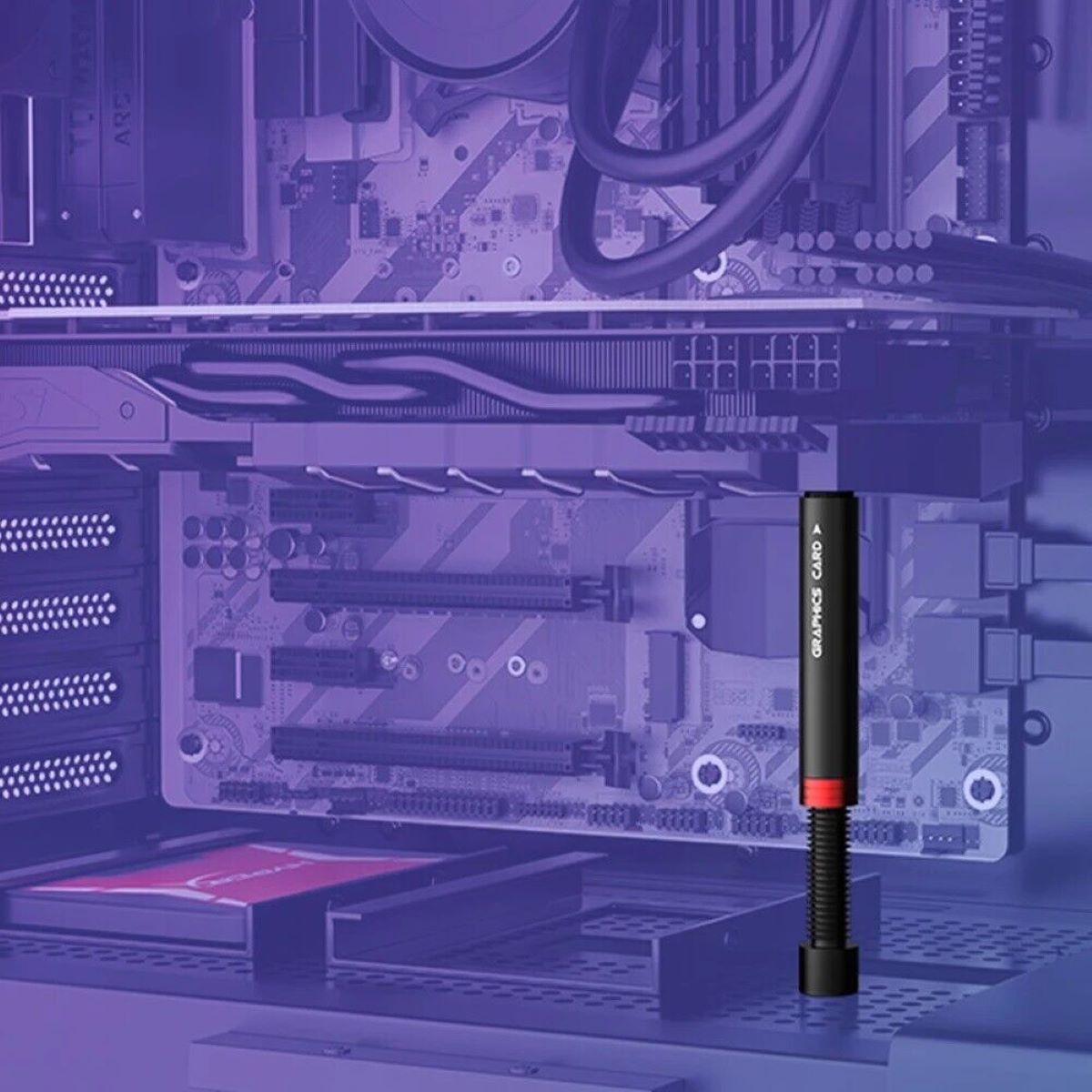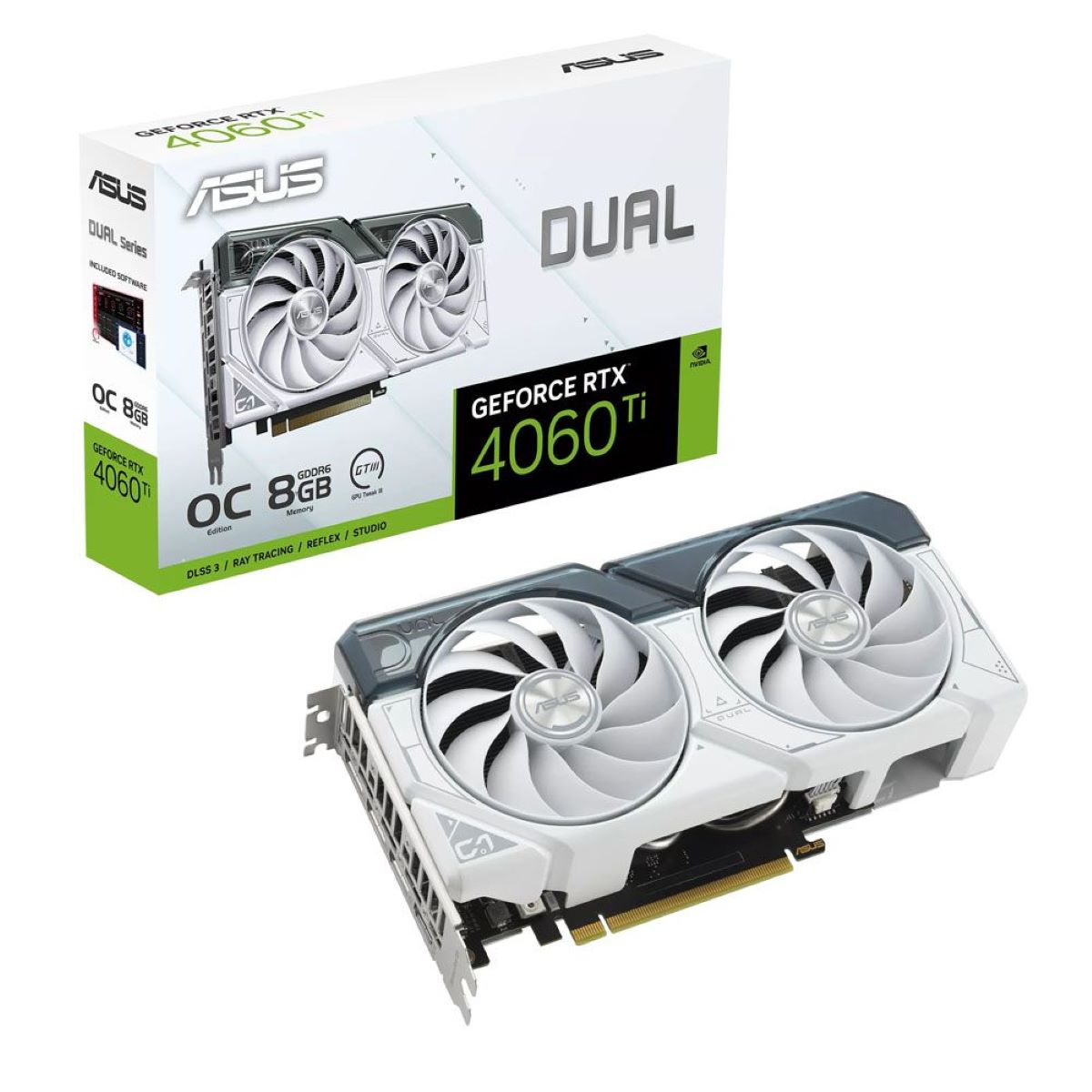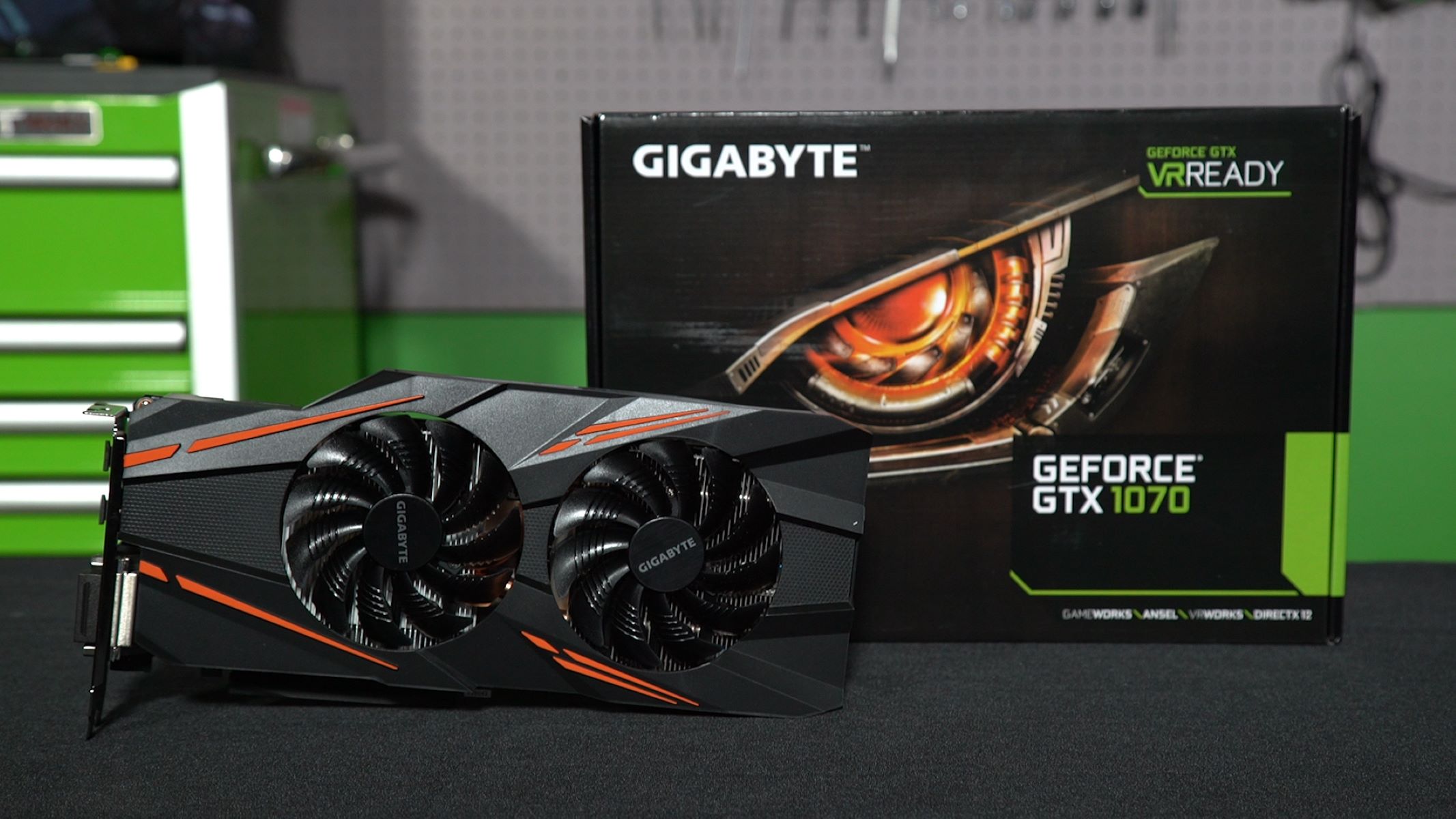What Is GPU Sag
GPU sag, also known as graphics card sag or GPU droop, refers to the phenomenon where a graphics card dips or sags down towards the motherboard, causing it to appear slanted or angled. This issue occurs due to the weight of the graphics card, which can cause strain on the PCIe slot or the motherboard itself.
When you install a graphics card in your computer, it is typically attached to the motherboard using the PCIe slot. Over time, due to the weight of the graphics card, the PCB (printed circuit board) can bend downwards, causing the sagging effect. This can not only impact the aesthetics of your system but also lead to potential performance and stability issues.
GPU sag is more common with larger and heavier graphics cards, especially those with heavy cooling solutions or extended PCBs. It is important to note that while GPU sag may not directly damage the motherboard or the graphics card, it can cause stress on the connectors and compromise the overall stability of your system.
To prevent GPU sag, it is essential to address the issue and take necessary preventive measures. There are various methods available to tackle GPU sag, ranging from simple DIY fixes to more advanced solutions like GPU braces or supports. Taking appropriate steps to prevent GPU sag not only ensures the longevity of your graphics card but also maintains the overall look and performance of your system.
Definition
GPU sag, also known as graphics card sag or GPU droop, refers to the phenomenon where a graphics card dips or sags down towards the motherboard, causing it to appear slanted or angled. This issue occurs due to the weight of the graphics card, which can cause strain on the PCIe slot or the motherboard itself.
When you install a graphics card in your computer, it is typically attached to the motherboard using the PCIe slot. Over time, due to the weight of the graphics card, the PCB (printed circuit board) can bend downwards, causing the sagging effect. This can not only impact the aesthetics of your system but also lead to potential performance and stability issues.
The weight of modern graphics cards, especially high-end or custom models, has increased significantly over the years. This weight, combined with the force of gravity, puts strain on the PCIe slot and can cause the PCB to bend. The sagging effect not only looks unappealing but can also lead to potential hardware issues.
GPU sag is more common with larger and heavier graphics cards, especially those with heavy cooling solutions or extended PCBs. It is important to note that while GPU sag may not directly damage the motherboard or the graphics card, it can cause stress on the connectors and compromise the overall stability of your system.
To prevent GPU sag, it is essential to address the issue and take necessary preventive measures. There are various methods available to tackle GPU sag, ranging from simple DIY fixes to more advanced solutions like GPU braces or supports. Taking appropriate steps to prevent GPU sag not only ensures the longevity of your graphics card but also maintains the overall look and performance of your system.
Causes of GPU Sag
GPU sag occurs due to several factors that contribute to the excessive weight or strain on the graphics card and the PCIe slot. Understanding the causes of GPU sag can help you take preventive measures to avoid this issue. Here are some common causes:
- Heavier Graphics Cards: Modern graphics cards have become larger and heavier, especially those designed for high-performance gaming. The weight of these cards can put significant strain on the PCIe slot and cause the PCB to bend over time.
- Extended PCB: Some graphics cards feature extended PCBs, which are longer than traditional models. The extended length can exacerbate the sagging effect, as it adds more weight to the graphics card and increases the leverage on the PCIe slot.
- Heavy Cooling Solutions: Graphics cards with bulky heatsinks, multiple fans, or liquid cooling systems tend to be heavier. The added weight from these cooling solutions can contribute to GPU sag, especially if the cooling components are not adequately supported.
- Poor Case Design or Mounting: In some cases, the sagging effect may be attributed to poor case design or improper mounting of the graphics card. If the case lacks proper support for the graphics card or if it is not securely fastened, the weight distribution may not be optimal, leading to GPU sag.
- Extended Use: Regardless of the graphics card’s weight or design, extended use can gradually lead to sagging. Over time, the constant force of gravity takes its toll on the PCB, causing it to bend downwards.
It is important to note that while GPU sag may not directly cause immediate damage, it can affect the performance and stability of your system in the long run. Addressing the causes of GPU sag and taking preventive measures can help maintain the optimal functionality and appearance of your graphics card and ensure the longevity of your system.
Impact of GPU Sag
GPU sag, although primarily an aesthetic concern, can have implications beyond the visual aspect of your system. Here are some potential impacts of GPU sag:
- Stress on PCIe Slot: The weight of a sagging graphics card puts excessive strain on the PCIe slot. Over time, this strain can weaken the slot or cause it to become loose, potentially affecting the connectivity and stability of the graphics card.
- Impaired Performance: GPU sag can interfere with the proper functioning of the graphics card. Misalignment caused by the sagging effect may negatively impact the electrical connections and cooling efficiency, leading to reduced performance or even overheating issues.
- Restricted Airflow: When a graphics card sags, it can obstruct the airflow inside the system. This can result in higher GPU temperatures, as the cooling components may not be able to function optimally. Increased temperatures can lead to throttling, reduced overclocking potential, or even hardware damage in severe cases.
- Accidental Damage: In extreme cases, a heavily sagging graphics card can put stress on nearby components, such as capacitors or other expansion cards, potentially causing damage. This can lead to additional repair or replacement costs.
- Aesthetic Concerns: While not impacting performance directly, GPU sag can be visually displeasing. It can detract from the overall appearance of your system and undermine the effort put into building a clean and well-organized setup.
It is important to address GPU sag to mitigate these potential impacts. By taking preventive measures and providing proper support for the graphics card, you can ensure optimal performance, stability, and longevity of your system. Proper support mechanisms, such as GPU braces or supports, can help alleviate the strain on the components and maintain the aesthetics of your build.
How to Prevent GPU Sag
Preventing GPU sag is crucial to maintain the overall performance, stability, and aesthetics of your system. Here are some effective methods to help prevent GPU sag:
- GPU Support Brackets: One of the most popular and effective solutions is to use GPU support brackets or GPU braces. These brackets are designed to provide additional support to the graphics card, reducing or eliminating sagging. They are typically adjustable and can be easily installed inside the case.
- DIY Support Methods: If you prefer a more cost-effective solution, you can use various DIY methods to support your graphics card. For example, you can use zip ties to secure the graphics card to the case or use small blocks of foam or rubber to prop up the sagging end of the card.
- Choose Smaller Graphics Cards: Opting for smaller graphics cards can help minimize the risk of GPU sag, as they generally weigh less and exert less strain on the PCIe slot.
- Proper Case Selection: When choosing a case for your system, consider one with adequate support for graphics cards. Look for cases with reinforced PCIe slots, adjustable mounting points, or integrated supports to ensure proper alignment and reduce sagging.
- Vertical GPU Mounting: Another option is to use a vertical GPU mount, which positions the graphics card vertically instead of horizontally. This not only showcases the GPU better but also eliminates the risk of sagging, as the weight is distributed differently.
- Secure Mounting: Ensure that the graphics card is securely mounted in the PCIe slot. Double-check that it is properly inserted, and use the retention mechanism (usually a screw or latch) to hold it firmly in place.
By taking proactive steps to prevent GPU sag, you can maintain the integrity and stability of your system while keeping it visually appealing. Choose the method that suits your preferences and resources, and ensure that your graphics card is adequately supported throughout its lifespan.
GPU Sag vs GPU Brace
When it comes to addressing the issue of GPU sag, there are different approaches to consider. Two common solutions are GPU sag and GPU brace. Let’s explore the differences between them:
GPU Sag: GPU sag refers to the natural downward bending or drooping of a graphics card due to its weight. This can occur over time, especially with larger or heavier graphics cards. GPU sag can lead to issues such as stress on the PCIe slot, impaired performance, restricted airflow, and potential damage to nearby components.
GPU Brace: On the other hand, a GPU brace is an external support mechanism specifically designed to counteract GPU sag. It is a device that helps keep the graphics card in an upright position and prevents it from sagging or bending. GPU braces come in various shapes and sizes and are typically adjustable to fit different graphics card configurations.
While GPU sag is the result of the weight and strain on the graphics card, a GPU brace is an active solution to counteract that sagging effect. It provides additional support to the graphics card and helps distribute its weight more evenly, reducing strain on the PCIe slot and preserving the system’s stability.
Choosing between GPU sag and a GPU brace depends on several factors, including personal preference, budget, and the severity of the sagging in your system. If your graphics card is experiencing significant sag and you want a simple and effective solution, a GPU brace may be the ideal choice. It can provide reliable support and alleviate the strain on the PCIe slot.
However, it’s essential to note that not all systems require a GPU brace, especially if the sagging effect is minimal. In such cases, other preventive measures, such as DIY support methods or choosing a smaller graphics card, may be sufficient to address the issue.
It’s worth considering that using a GPU brace may require additional space in your system, and some braces may obstruct other components like fans or cables. Therefore, it is important to ensure compatibility and proper installation when using a GPU brace.
Ultimately, both GPU sag and GPU braces aim to prevent or minimize the negative effects of sagging graphics cards. The choice between them will depend on the severity of the sag, personal preferences, and the desired level of support for your system.
Conclusion
GPU sag, or the drooping of a graphics card over time, can have a negative impact on both the performance and aesthetics of your system. The weight of modern graphics cards, especially larger and heavier models, can strain the PCIe slot and lead to potential issues such as reduced performance, restricted airflow, and even damage to nearby components.
Preventing GPU sag is crucial to maintaining a high-performing and visually appealing system. Various methods can be employed to address this issue, including using GPU braces or supports, implementing DIY support mechanisms, choosing smaller graphics cards, and ensuring proper case selection with adequate support for graphics cards.
While GPU braces offer an effective and dedicated solution to counteract GPU sag, they are not always necessary for every system. Depending on the severity of sag and individual preferences, other methods may suffice to provide the required support and maintain proper alignment.
By taking preventive measures to prevent GPU sag, you can improve the longevity, performance, and stability of your graphics card and overall system. It is essential to assess your specific situation, evaluate the available options, and select the most suitable approach to address GPU sag effectively. By doing so, you can ensure that your system not only functions optimally but also looks visually appealing for an enhanced computing experience.







